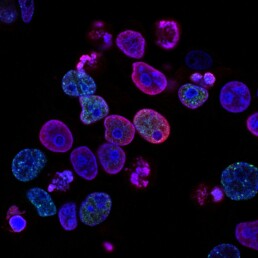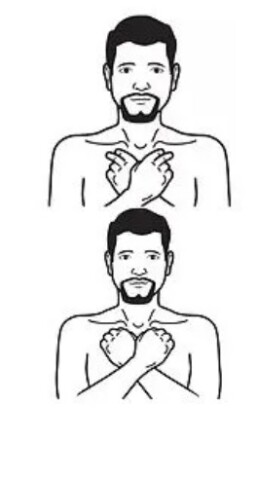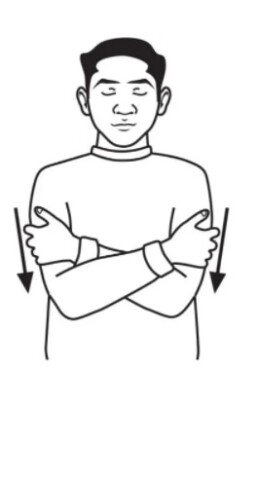Help for families of people with autism: The people of energy psychology
Mandi Freger is a licensed counselor in Pittsburgh. She specializes in help for families of people with autism spectrum disorders (ASD) using energy psychology techniques. Her book, _____, delves into the many ways that energy psychology techniques can make a world of difference to family members of people with autism spectrum disorders.
Help for family members of people with autism
Mandi found her niche and her passion working with people with ASD. She worked in hospital and outpatient settings and became director of autism services in a hospital system affiliated with Cleveland Clinic Autism Development Solutions. Eventually she transitioned to private practice, specializing in ASD.
Early in her career, she joined ACEP-founding-member Greg Nicosia’s (link to bio of Greg) practice right out of graduate school. She became a member of ACEP in 1999 and went on to chair the education committee and serve on the board of directors. During her years of working and serving with Greg and ACEP, she travelled the country, assisting in energy psychology trainings.
The ASD service cliff + Mandi Freger = solutions, service, and opportunity
People on the autism spectrum age out of services at 21, and then few resources or services are available.
“When I originally went into private practice 8 years ago, ASD population was very underserved in outpatient. Aging out of most services at 21, few services were available,” she says.
“I thought I could condense family behavioral training with individual treatment through outpatient services and that is what I set out to do.”
Finding a need and filling it
Mandi says she had not planned on being a therapist, having grown up in an entrepreneurial family and studied business in college. However, the Universe had other plans, and “dropped” her into her job with Greg and her career. Today, service is simply a way of life.
In creating a successful private therapy practice, Mandi combined her clinical skills with business savvy.
“It still blows my mind one can make a good living from something that seems so easy – counseling and consulting,” she says.
She remains service driven and says she is fortunate to have the tools that match clients’ needs.
Help for families of people with autism
For Mandi, the most consistent gratitude seems to come from families of kids diagnosed with ASD.
“I think they are most appreciative about how I can streamline training and practice for them on the layered complexity of the disorder,” she says.
“’Helping,’ however, is an ongoing conversation. So, all of my clients have successes, if goals are appropriate and effective from the start of treatment.”
She is proactive in helping people define goals and measure progress. In her sessions, she focuses on processing the emotions, then moving forward with action. A change in some troublesome action, in turn, contributes to more positive emotions.
Looking forward
Looking to the future of energy psychology and mental health therapy in general, Mandi says we need strong energy psychology mental health practitioners to provide support and coaching to people around the world.
Energy psychology is becoming mainstream, but not necessarily in the hands of people with strong clinical skills and training. We risk diluting the field with pop-culture influence and misinformation.
“The difficult thing is that most are not clinical mental health providers and that can significantly change the lens through which one sees the issues of importance. However, relatively few still have mastered the art of using these tools, including practicing good clinical and energetic boundaries and hygiene, and I think that is where the need will remain,” she says.
Feeling inspired?
Want to learn more about the tools and theoretical framework that Mandi uses? Stay up-to-date with ACEP’s comprehensive energy psychology (CEP) training here. Be sure to check out Mandi’s book here.
Do you have an interesting story about energy psychology in the real world? We’d love to hear from you! Email Sarah at [email protected].
Help for the Emotional Effects of Cancer
This is the third in a three-part series on EP and cancer
Cancer causes tremendous emotional pain. Some cancer patients who have been diagnosed say that cancer is more of an emotional problem than a physical one. Energy Psychology tools seem uniquely positioned to help alleviate the distress that a diagnosis causes. Tools like EFT and TFT, as well as the many techniques listed on ACEP’s Resources for Resilience site, can provide great relief. In this blog, we share stories from the treatment room, describing how energy psychology can help alleviate the emotional effects of cancer.
Mis-hearing leads to PTSD-like symptoms, relieved with EFT
A woman in her early 50’s had a breast cancer diagnosis. As often happens to people diagnosed with cancer, she was in the throes of shock and distress when she met with her oncologist. Clients often report that they can’t “take in” what their doctors are telling them, that they leave appointments wondering what was just said, and realizing that they have many questions they forgot to ask. In this case, the client mis-heard “grade 4 tumor” as “stage 4 cancer.”
Though she quickly realized her error and understood that she did not have metastatic breast cancer, she was extremely distressed about the idea and still felt terrified. In our individual counseling session, we tapped together using emotional freedom techniques (EFT) Tearless Trauma and Tell the Story protocols. The tearless trauma is a misnomer in this case because she cried easily at the thought of the story. However, we were able to reduce her distress and worked to clear her trauma. Within one session, she experienced a reduction in subjective units of distress (SUDs) from a ten to a zero. The clearing held in subsequent counseling sessions four to six weeks later.
Fear of recurrence
For women with breast cancer who have some understanding of the mind-body connection, fear of recurrence can create what seems like a trap. These women often express a fear that their fear is going to create a negative outcome. Effortfully trying not to think about it, or to think positive thoughts instead, often proves futile. One woman in such a paradoxical trap came for therapy and we began using EFT to manage her fear of recurrence. Her distress reduced during the session. Additionally, having EFT as a self-help tool provided her with a coping tool that she used regularly to help manage her fear as it arose.
EFT tapping in groups
In regular facilitated support groups, women with various cancer types use EFT at the beginning of the sessions to come together and relax. Often, we use the “constricted breathing” technique to demonstrate and reinforce the physiological effect of tapping. (In this technique, tapping on constricted breathing allows the breath to become fuller and more satisfying/less constricted). Most women achieve a feeling of un-constricted breath after one round of tapping. They also report feeling more relaxed, more present, and, in one case, feeling “warm and tingly.”
A vision for the future: alleviating the emotional effects of cancer
Because of the deep emotional distress that cancer patients often feel, it is important to provide them with tools and support to reduce these feelings. Energy psychology techniques have a demonstrated ability to reduce subjective distress. Moreover, these are tools that we can use therapeutically and as ongoing self-initiated self-help practices. Incorporating mind-body techniques such as these for the management of mood and stress in people with cancer can provide a tremendous benefit to patients' subjective wellbeing. Because of the role of stress in disease progression, these tools may even improve outcomes.
____
Are you a therapist interested in learning to use these techniques with your clients? Check out ACEP’s training catalogue. Are you a client looking for a clinician trained in these methods? Check out ACEP’s practitioner directory.
Author: Sarah Murphy, LPC, NCC, is a licensed and nationally certified professional counselor. She specializes in energy psychology, including EFT, as well as mindfulness and meditation. Sarah works with individuals seeking to find peace within themselves, people who have serious medical diagnoses, and couples who want to resolve conflict and live in harmony. Sarah is an ACEP Board member and chair of its communications committee; she has a private practice and serves as staff therapist with Unite for HER.
Energy Psychology Offers Help for the Emotional Effects of Cancer: The Research
This is the second in a three-part series on using energy psychology tools when working with people who have been diagnosed with cancer.
A cancer diagnosis causes tremendous emotional upheaval for many people who have received a diagnosis. Energy psychology tools may be uniquely positioned to help. Here is a brief review of the research on EP and cancer from around the world. These tools can offer relief for the emotional effects of cancer.
EFT improves physiological markers of health
Bach et al published a study in the Journal of Evidence-Based Integrative Medicine in 2019, examining the psychological and physiological outcomes for people (n=203) who attended a four-day EFT workshop. Participants experienced reductions in anxiety, depression, PTSD, pain, and cravings, and an increase in happiness. Several physiological markers were taken of some study participants (n=31). These demonstrated a significant increase in Immunoglobin A (SigA), an antibody that plays a role in immune function, and decreases in resting heart rate, cortisol, and blood pressure.
EFT for chemo brain
Laura Track et al conducted a randomized, controlled study of EFT for cancer-related cognitive impairment (CRCI; aka “chemo brain”). The study was published by EClinicalNews in August of 2021. Participants were 121 patients in Belgium and the UK who met diagnostic criteria for cognitive impairment. The study lasted 16 weeks. For the first eight weeks, half of the participants received instruction in EFT tapping and tapped with a clinician and at home, while the other half waited. They all took a second cognitive test and other assessments. Then, the second group got EFT training. The difference between groups at eight weeks was significant, with the tapping group achieving a reduction in cognitive impairment. The second group “caught up” at 16-weeks, after they had done eight weeks of tapping.
EFT for side effects of treatment
Baker and Hoffman published a study in 2014, investigating the effect of EFT tapping on depression, anxiety, and side-effects of hormone therapies used to treat some types of breast cancer. The side effects include pain, fatigue, and menopausal symptoms such as hot flashes and night sweats. The study participants (n=41) received three weeks of instructed EFT and we assigned self-tapping for the next nine weeks. They achieved statistically significant improvements in total mood, depression, anxiety, and fatigue, as well as a reduction in hot flashes and the experience of hot flash as problematic.
Pain in cancer patients
Niken, Wahyuningsih, and Prasetyorini published a case study in 2020, documenting the experience of four cancer patients who complained of moderate to severe pain. They found that using EFT reduced the experience of pain.
Spiritual EFT for self-concept of women with mastectomy
Afriyanti and Wenni used Spiritual EFT in a quasi-experimental study of 33 women who had had mastectomies. At baseline, only three had a good self-concept. After three days of tapping, the number had risen to ten. This improvement was statistically significant and gives rise to some questions, including what would happen if the intervention lasted more than three days.
Pilot study in Australia found EFT helped decrease anxiety in cancer patients
Peta Stapleton conducted a pilot study of group EFT for palliative care among cancer patients. Researchers randomly assigned thirty-two cancer patients to EFT or treatment as usual (TAU). The EFT group received two-hour EFT sessions, led by a trained psychologist, for four weeks. Delivery moved from in-person to Zoom after the Covid-19 lockdown. All patients took assessments for depression, anxiety, PTSD, quality of life, happiness, pain, hope, and meaning of life. After treatment, the EFT group received significant reductions in anxiety, and trends toward improvements in meaning of life, quality of life, PTSD and happiness. The TAU group did not receive any benefits. These results were compelling enough to launch a full study, which is now underway.
Advanced Integrative Therapy (AIT)
Practitioners of AIT have used this energy psychology technique to address the underlying emotional causes of cancer. They are seeing good enough anecdotal evidence to warrant a full study. Today, a study of AIT and cancer is underway, with preliminary data expected this spring.
The research on energy psychology and cancer is underway and growing. The results so far are promising, which makes sense, according to the theories underpinning energy psychology. We look forward to a growing research base and to helping more and more people with this diagnosis.
___
Are you a therapist interested in learning to use these techniques with your clients? Check out ACEP’s training catalogue. Are you a client looking for a clinician trained in these methods? Check out ACEP’s practitioner directory.
Author: Sarah Murphy, LPC, NCC, is a licensed and nationally certified professional counselor. She specializes in energy psychology, including EFT, as well as mindfulness and meditation. Sarah works with individuals seeking to find peace within themselves, people who have serious medical diagnoses, and couples who want to resolve conflict and live in harmony. Sarah is an ACEP Board member and chair of its communications committee; she has a private practice and serves as staff therapist with Unite for HER.
Energy Psychology and Cancer: Where we are and where we are heading
This is the first in a three-part series on using energy psychology tools when working with people who have been diagnosed with cancer.
Energy psychology tools may be helpful for people with cancer. And there are many people living with cancer: In 2018, the United States saw 1.7 million new cases of cancer. In 2020, 19.3 million new cancer cases were diagnosed worldwide. Moreover, cancer is not just a physical disease: it takes a tremendous toll on patients' mental health.
That's because cancer creates an existential crisis for many. People with cancer also experience an elevation in distress: depression rates in the US jump four-fold among cancer patients, with nearly a quarter of cancer patients experiencing depression. Anxiety rates among cancer patients in the US climb as well, affecting nearly a fifth of people with cancer. Many people with cancer report experiencing PTSD-like symptoms, and almost all say they experience feelings of overwhelm.
Sadly, the system in the US does not universally encompass mental and emotional care in cancer treatment. This has costs, not only in terms of emotional wellbeing, but perhaps in resilience and ability to heal. Energy psychology techniques, including the emotional freedom techniques (EFT), may be uniquely positioned to fill the emotional need of cancer patients. These modalities often focus on addressing and clearing underlying emotional traumas while providing effective self-soothing routines that may help cancer patients navigate the emotions that often accompany diagnosis.
Energy Psychology and Cancer: Addressing the Body-Mind
A key to remission?
Kelly Turner studied cases of unexpected and medically unexplained remission, conducting interviews with people who had experienced these seemingly miraculous cures. She distilled the data and found seven key factors that were almost universal. You can find them in her book Radical Remission.
Among the factors identified are eliminating negative emotions and increasing positive emotions. While the sentence is easy to write, achieving the essence is not! However, EP methods are famous for their ability to heal underlying traumas and the ensuing energy disruptions, which lead to distress and may contribute to disease.
The stress-inflammation-disease cycle
Researchers in the field of cardiovascular disease were perhaps the first to identify the role of stress in disease. Today, people widely recognize the role of stress in disease. Psychoneuroimmunologists have discovered some of the mechanisms by which stress leads to diseases including cancer.
Episodic stress is an important part of life, mediating injury and pathogenic assault. When cells are under attack or have been injured, a cascade of activity on the molecular level causes cells to become inflamed, holding fluid. In other cases, it is the threat of assault that causes inflammation: the hypothalamus (a region in the limbic brain) signals to the pituitary body (often called the master gland) to tell the adrenal glands to release adrenaline. We call this cycle the HPA axis.
From stress to distress
Under normal stress conditions, this action reduces inflammation. However, this cycle changes in people experiencing chronic stress. Researchers have found that this is at least partly because an immune system cell or cytokine called interleukin 6 (IL6) triggers inflammation in times of stress. And IL6 plays a role in cancer, as well as a host of other diseases including diabetes, autoimmune disease, obesity, depression, and anxiety. It might not be unreasonable, then, to wonder if decreasing stress levels might assist in the healing response of those with cancer diagnoses, and to prevent cancer occurrence in the first place.
____
Are you a therapist interested in learning to use these techniques with your clients? Check out ACEP’s training catalogue. Are you a client looking for a clinician trained in these methods? Check out ACEP’s practitioner directory.
Author: Sarah Murphy, LPC, NCC, is a licensed and nationally certified professional counselor. She specializes in energy psychology, including EFT, as well as mindfulness and meditation. Sarah works with individuals seeking to find peace within themselves, people who have serious medical diagnoses, and couples who want to resolve conflict and live in harmony. Sarah is an ACEP Board member and chair of its communications committee; she has a private practice and serves as staff therapist with Unite for HER.
The Brief Energy Correction: A Tool to Rapidly Reduce Pain and Distress?
Robin Bilazarian is an experienced EFT trainer. During one training, she was working with a volunteer who was experiencing pain. Usually, a few rounds of EFT tapping reduces pain. This time, it did not. Bilazarian remembered a tool from her training in comprehensive energy psychology: the brief energy correction (BEC). She led the volunteer through the simple process and their pain finally diminished. Intrigued, Bilazarian enlisted expert researcher Marg Hux to design and perform a study to see if this fast tool could be as effective and efficient as it seemed. What they found is intriguing: this is a simple process to rapidly reduce pain and distress.
They published the findings of their pilot cohort study, Rapid Group Treatment Of Pain And Upsets With The Brief Energy Correction, in the International Journal of Healing and Caring at the height of the pandemic. They found that indeed, the BEC reduced pain and other symptoms remarkable rapidly, even where tapping therapies had failed. This may be the first study that investigates this technique and certainly the only to investigate it as a standalone treatment.
The theory
There is a theory in the world of energy psychology that sometimes, some people’s nervous systems get disorganized or “switched.” This is said to cause problems like confusing left and right, not swinging arms while walking or swinging the wrong arm (i.e., left leg steps forward and left arm swings forward too, homolaterally), spatial issues like bumping into things, and even severe psychological distress and learning difficulties.
A disconnect in nerve impulses seems to cause this disorganization. And when our energy fields are disorganized, meridian tapping techniques are not effective. The BEC hand positions and breaths allow us to reorganize and “un-switch” the energy within our system. It’s sort of the human version of ctrl-alt-del – a reboot. The procedure is part of Thought Field Therapy and in ACEP’s comprehensive energy psychology (CEP) curriculum.
The study setup
To do the BEC technique, place one hand on your navel. Move your other hand to the following places, holding each for just one breath:
- Both sides of the collar bone, using thumb and index finger on either side
- Under the nose, using index and middle finger
- Under the mouth, using index and middle finger
- At the tailbone, with the back of the hand on your body and thumb facing upwards
For the present study, participants were recruited in an online workshop at an annual conference on meridian-based techniques. One hundred thirty people participated in the workshop. Of those, 75 responded to the study questions. Some had pain (39) and others used a current “upset” (36).
Bilazarian led the group through three rounds of BEC-6. A round consisted of six repeats (hence the term BEC-6). Each hand placement lasts one breath, or approximately five seconds, so a round of six takes about 30 seconds. After a round, participants rated their pain or distress, and then proceeded to the next round.
Study results
The group rated their pain or distress on an 11-point scale (0 – 10) before beginning the procedure and after each of the three rounds of treatment. The entire process lasted just 90 seconds. (!!) The drops were substantial.
For pain, the mean ratings were:
- Baseline: 5.53
- Round 1: 3.72 (p<0.0001)
- Round 2: 2.6 (p<0.0001)
- Round 3: 1.58 (p<0.0001)
For distress, the mean ratings were:
- Baseline: 6.06
- Round 1: 3.64 (p<0.001)
- Round 2: 2.22 (p<0.001)
- Round 3: 0.89 (p<0.001)
This intervention significantly reduced the intensity of both pain and distress. Moreover, it achieved these results faster than most meridian therapies.
It’s interesting to note that the participants in this study had attended a two-day workshop, and this was at the end of it. After two days of EFT tapping, one would expect that most people would not have much pain or distress left! Yet it is precisely this type of resistant pain that the BEC seems to be so adept at clearing.
Rapidly reduce pain and distress: use the BEC!
This adds to the body of research on mind-body tools for healing. It’s the first to explore the BEC and shows it to be a great tool to rapidly reduce pain and distress.
Want to learn more?
Are you intrigued and want to learn more? Sign up for certification in our upcoming comprehensive energy psychology (CEP) training program. You can also get trained in TFT with master trainer Suzanne Connolly – make sure you give credit to ACEP!
Energy Psychology and Cancer
Energy psychology tools may be helpful for people with cancer. And there are many: In 2018, the United States saw 1.7 million new cases of cancer. In 2020, 19.3 million new cancer cases were diagnosed worldwide. Moreover, cancer is not just a disease: it takes a toll on patients' mental health.
That's because cancer creates an existential crisis for many. People with cancer also experience an elevation in distress: depression rates in the US jump four-fold among cancer patients, with nearly a quarter of cancer patients experiencing depression. Anxiety rates among cancer patients in the US climb as well, affecting nearly a fifth of people with cancer. Many people with cancer report experiencing PTSD-like symptoms, and almost all say they experience feelings of overwhelm.
Sadly, the system in the US does not universally encompass mental and emotional care in cancer treatment. This has costs, not only in terms of emotional wellbeing, but perhaps in resilience and ability to heal. Energy psychology techniques, including the emotional freedom techniques (EFT), may be uniquely positioned to fill the emotional need of cancer patients. These modalities often focus on addressing and clearing underlying emotional traumas while providing effective self-soothing routines that may help cancer patients navigate the emotions that often accompany diagnosis.
Energy Psychology and Cancer: Addressing the Body-Mind
The stress-inflammation-disease cycle
Researchers in the field of cardiovascular disease were perhaps the first to identify the role of stress in disease. Today, people widely recognize the role of stress in disease. Psychoneuroimmunologists have discovered some of the mechanisms by which stress leads to diseases including cancer.
Episodic stress is an important part of life, mediating injury and pathogenic assault. When cells are under attack or have been injured, a cascade of activity on the molecular level causes cells to become inflamed, holding fluid. In other cases, it is the threat of assault that causes inflammation: the hypothalamus (a region in the limbic brain) signals to the pituitary body (often called the master gland) to tell the adrenal glands to release adrenaline. We call this cycle the HPA axis.
Under normal stress conditions, this action reduces inflammation. However, when people experience chronic stress, this cycle of inflammation – healing – homeostasis is disrupted. Researchers have found that this is at least partly because an immune system cell or cytokine called interleukin 6 (IL6) triggers inflammation in times of stress. And IL6 is implicated in cancer, as well as a host of other diseases including diabetes, autoimmune disease, obesity, depression, and anxiety. It might not be unreasonable, then, to wonder if decreasing stress levels might assist in the healing response of those with cancer diagnoses, and to prevent cancer occurrence in the first place.
A key to remission?
Kelly Turner studied cases of unexpected and medically unexplained remission, conducting interviews with people who had experienced these seemingly miraculous cures. She distilled the data and found seven key factors that were almost universal. You can find them in her book Radical Remission.
Among the factors identified are eliminating negative emotions and increasing positive emotions. While the sentence is easy to write, achieving the essence is not! However, EP methods are known for their ability to heal underlying traumas and the ensuing energy disruptions, which lead to distress and may contribute to disease.
The research: what we know so far about energy psychology and cancer
EFT improves physiological markers of health
Bach et al published a study in the Journal of Evidence-Based Integrative Medicine in 2019, examining the psychological and physiological outcomes for people (n=203) who attended a four-day EFT workshop. Participants experienced reductions in anxiety, depression, PTSD, pain, and cravings, and an increase in happiness. Several physiological markers were taken of some study participants (n=31). These demonstrated a significant increase in Immunoglobin A (SigA), an antibody that plays a role in immune function, and decreases in resting heart rate, cortisol, and blood pressure.
EFT for chemo brain
Laura Track et al conducted a randomized, controlled study of EFT for cancer-related cognitive impairment (CRCI; aka “chemo brain”). The study was published by EClinicalNews in August of 2021. Participants were 121 patients in Belgium and the UK who met diagnostic criteria for cognitive impairment. The study lasted 16 weeks. For the first eight weeks, half of the participants received instruction in EFT tapping and tapped with a clinician and at home, while the other half waited. They all took a second cognitive test and other assessments. Then, the second group got EFT training. The difference between groups at eight weeks was significant, with the tapping group achieving a reduction in cognitive impairment. The second group “caught up” at 16-weeks, after they had done eight weeks of tapping.
EFT for side effects of treatment
Baker and Hoffman published a study in 2014, investigating the effect of EFT tapping on depression, anxiety, and side-effects of hormone therapies used to treat some types of breast cancer. The side effects include pain, fatigue, and menopausal symptoms such as hot flashes and night sweats. The study participants (n=41) received three weeks of instructed EFT and we assigned self-tapping for the next nine weeks. They achieved statistically significant improvements in total mood, depression, anxiety, and fatigue, as well as a reduction in hot flashes and the experience of hot flash as problematic.
Pain in cancer patients
Niken, Wahyuningsih, and Prasetyorini published a case study in 2020, documenting the experience of four cancer patients who complained of moderate to severe pain. They found that using EFT reduced the experience of pain.
Spiritual EFT for self-concept of women with mastectomy
Afriyanti and Wenni used Spiritual EFT in a quasi-experimental study of 33 women who had had mastectomies. At baseline, only three had a good self-concept. After three days of tapping, the number had risen to ten. This improvement was statistically significant and gives rise to some questions, including what would happen if the intervention lasted more than three days.
Pilot study in Australia found EFT helped decrease anxiety in cancer patients
Peta Stapleton conducted a pilot study of group EFT for palliative care among cancer patients. Researchers randomly assigned thirty-two cancer patients to EFT or treatment as usual (TAU). The EFT group received two-hour EFT sessions, led by a trained psychologist, for four weeks. Delivery moved from in-person to Zoom after the Covid-19 lockdown. All patients took assessments for depression, anxiety, PTSD, quality of life, happiness, pain, hope, and meaning of life. After treatment, the EFT group received significant reductions in anxiety, and trends toward improvements in meaning of life, quality of life, PTSD and happiness. The TAU group did not receive any benefits. These results were compelling enough to launch a full study, which is now underway.
Advanced Integrative Therapy (AIT)
Practitioners of AIT have used this energy psychology technique to address the underlying emotional causes of cancer. They are seeing good enough anecdotal evidence to warrant a full study. Today, a study of AIT and cancer is underway, with preliminary data expected this spring.
Stories from the (virtual) treatment room
Mis-hearing leads to PTSD-like symptoms, relieved with EFT
A woman in her early 50’s had a breast cancer diagnosis. As often happens to people diagnosed with cancer, she was in the throes of shock and distress when she met with her oncologist. Clients often report that they can’t “take in” what their doctors are telling them, that they leave appointments wondering what was just said, and realizing that they have many questions they forgot to ask. In this case, the client mis-heard “grade 4 tumor” as “stage 4 cancer.”
Though she quickly realized her error and understood that she did not have metastatic breast cancer, she was extremely distressed about the idea and still felt terrified. In our individual counseling session, we tapped together using emotional freedom techniques (EFT) Tearless Trauma and Tell the Story protocols. The tearless trauma is a misnomer in this case because she cried easily at the thought of the story. However, we were able to reduce her distress and worked to clear her trauma. Within one session, she experienced a reduction in subjective units of distress (SUDs) from a ten to a zero. The clearing held in subsequent counseling sessions four to six weeks later.
Fear of recurrence
For women with breast cancer who have some understanding of the mind-body connection, fear of recurrence can create what seems like a trap. These women often express a fear that their fear is going to create a negative outcome. Effortfully trying not to think about it, or to think positive thoughts instead, often proves futile. One woman in such a paradoxical trap came for therapy and we began using EFT to manage her fear of recurrence. Her distress reduced during the session. Additionally, having EFT as a self-help tool provided her with a coping tool that she used regularly to help manage her fear as it arose.
Experience of tapping in groups
In regular facilitated support groups, women with various cancer types use EFT at the beginning of the sessions to come together and relax. Often, we use the “constricted breathing” technique to demonstrate and reinforce the physiological effect of tapping. (In this technique, tapping on constricted breathing allows the breath to become fuller and more satisfying/less constricted). Most women achieve a feeling of un-constricted breath after one round of tapping. They also report feeling more relaxed, more present, and, in one case, feeling “warm and tingly.”
A vision for the future
Because of the deep emotional distress that cancer patients often feel, it is important to provide them with tools and support to reduce these feelings. Energy psychology techniques have a demonstrated ability to reduce subjective distress. Moreover, these are tools that we can use therapeutically and as ongoing self-initiated self-help practices. Incorporating mind-body techniques such as these for the management of mood and stress in people with cancer can provide a tremendous benefit to patients' subjective wellbeing. Because of the role of stress in disease progression, these tools may even improve outcomes.
Are you a therapist interested in learning to use these techniques with your clients? Check out ACEP’s training catalogue. Are you a client looking for a clinician trained in these methods? Check out ACEP’s practitioner directory.
Author: Sarah Murphy, LPC, NCC, is a licensed and nationally certified professional counselor. She specializes in energy psychology, including EFT, as well as mindfulness and meditation. Sarah works with individuals seeking to find peace within themselves, people who have serious medical diagnoses, and couples who want to resolve conflict and live in harmony. Sarah is an ACEP Board member and chair of its communications committee; she has a private practice and serves as staff therapist with Unite for HER.
EFT Research Proliferating Around the World
John Freedom, Marg Hux, and Jan Warner reviewed the literature on acupoint tapping studies published in foreign-language journals. They published their findings, Research on Acupoint Tapping Therapies Proliferating around the World, in a recent issue of the Energy Psychology Journal. This shows that there is great interest in EFT, and EFT research, around the world!
The review covers 91 studies, the majority of which came from Indonesia (71%). This research trove adds to the evidence base for meridian tapping – which already contains 120 clinical trials! – demonstrating the effectiveness of EFT tapping. Moreover, it shows that interest in EFT is growing outside the Western world, has regional variations that remain effective, and is being utilized in clinical healthcare settings.
Sleuthing, and a research goldmine
Lead author John Freedom, who serves as ACEP’s Research Committee chair, serendipitously discovered articles about EFT in non-English-language journals. The volume of material surprised him – at first pass, he knew that there were at least 50 "new" studies. And John knows the research on EFT!
Of course, he was also curious to understand what the research found. So, he engaged Marg Hux and Jan Warner, who both serve on the research committee, to assist him in mining the databases and make sense of the articles they found.
The study setup
A search in ResearchGate uncovered 86 studies in non-English journals. Additional searching using the EBSCO search engine uncovered an additional five studies.
More than half of the studies investigated a variation on EFT called Spiritual EFT or SEFT. SEFT is a protocol popular in Indonesia that combines EFT tapping while reciting verses from the Quran.
Most of the articles were published in non-English language journals and had only a title or abstract in English. Of those that were translated, the quality of translation varied.
Snapshot of the literature on EFT research around the world:
- 71% were from Indonesia
- 81% had only a title or abstract published in English
- 84% were single group or comparative clinical trials
- 5% were literature reviews
- 29% addressed anxiety
- 15% addressed depression
- 11% addressed hypertension
- 47% used EFT
- 53% used Spiritual EFT, or SEFT
Why this study matters
The review reveals studies that had previously been unknown in the West. It demonstrates that EFT, and EFT research, is growing around the world.
Interestingly, in contrast with most English-language studies, these reports came from hospitals, clinics, universities. Moreover, they addressed physiological complaints such as hypertension, diabetes, and pain. Finally, they differ from most Western studies in addressing specific populations such as prisoners, addicts, and cancer patients.
In sum, they give us a good look at how EFT is being used – and how effective it is! – in clinical settings around the world.
Want to learn more?
If you would like to learn more about the science behind EFT and get CE’s, check out ACEP’s Science of Energy Healing course. To support ACEP research, consider donating to our Research Committee.
Feeling stuck? Try this.
If you’re feeling stuck and want to learn a safe mind-body technique to help, you’re in the right place. This blog teaches you an easy tool you can use right now to get un-stuck.
When your energy feels scrambled, leaving you confused or stuck, you can bring yourself back to balance by practicing the Collarbone Breathing Technique. Use this simple body-based technique when you are feeling stuck. It helps restore left-right balance and allows you to feel more clear and connected. The technique was adapted by Phil Mollon from Roger Callahan's Thought Field Therapy. Practice the technique right now by watching the video below and following along. You can also download written instructions in English, Spanish, and Portuguese.
How it Works
Cross your hands over your chest with your fingers under your collarbones. Breathe halfway in and hold, then breathe all the way in and hold; breathe halfway out and hold, then breathe all the way out and hold. You repeat the breathing sequence, this time with your knuckles under your collarbones.
Why It Works
By using energy medicine techniques like the Collarbone Breathing, you help your energy system to rebalance. This allows you to get un-stuck quickly and easily. There are a few things happening in this deceptively simple technique.
By crossing our arms, we are crossing the corpus callosum, which helps us feel grounded. When we place our hands across our chest with hands under collarbones, we are activating our meridian system ― particularly the K-27 point, which helps reduce anxiety. And by breathing slowly, we are slowing our brainwaves, which helps us relax. Moving our tongue up and down also stimulates the flow of energy along our meridian system.
If you haven’t given the Collarbone Breathing technique a try yet, do it now. Take notice of how your body feels both before and after you use the technique. This technique is just one of many you can use to get un-stuck.
More Techniques to get you un-stuck
If you found Collarbone Breathing helpful, here are a few more tools you can use to clear confusion and clumsiness: the Brain Balancer, also called the "9-gamut"; and the Cross Crawl. If you want to learn how to use techniques like this to improve your wellbeing, contact me.
Video Resources Provided by the ACEP Humanitarian Committee
The mission of the ACEP Humanitarian Committee is to develop and implement humanitarian projects that alleviate emotional distress caused by catastrophic natural and man-made events around the globe. We do this by encouraging and assisting ACEP members in developing humanitarian projects that utilize recognized energy psychology and other modalities that meet ACEP’s standards and guidelines. Learn more here.
Feel anxious? Try this.
If you are looking for a tool to use to ease your anxiety, you are in the right place. This blog teaches a simple body-based tool to help when you feel anxious.
One of the simplest ways to reestablish feelings of safety is to cue bring yourself back into the body and in the moment by applying gentle but firm pressure to the arms and upper torso area using Simplified Self-Havening. This simple body-based technique helps your body become calm and centered. Practice the technique right now by watching the video below and following along. You can also download written instructions in English, Spanish, and Portuguese. You can use this technique any time you feel scared and want to re-establish a sense of safety.
How it Works
It is exceptionally simple to do! Cross your arms over your chest with your hands on your shoulders. Using firm but gentle pressure, draw your hands down your arms to your elbows. While you do this, hum a little tune.
Why It Works
Simple self-havening helps bring us back into the body and into the moment. The gentle pressure on the chest area activates the parasympathetic, relaxing part of our nervous system. By crossing our arms, we are causing brain activity across both hemispheres, which helps us feel more grounded.
This technique is also helpful if you feel numb or disconnected, or just need some self-soothing. Havening was developed as a trauma technique by neuroscientist Ronald Ruden. You can read more about it at Havening.org.
If you haven’t given Simplified Self-Havening a try yet, do it now. Take notice of how your body feels both before and after you use the technique. This technique is just one of many you can use to feel calm and safe.
More Techniques to Feel Better Fast
If you found Simplified Self-Havening helpful, here are a few more tools you can use next time you feel scared or anxious: Calming Hug, the Soothing Butterfly Hug, and Calm Breathing. If you want to learn more techniques like this to improve your wellbeing, contact me.
Video Resources Provided by the ACEP Humanitarian Committee
The mission of the ACEP Humanitarian Committee is to develop and implement humanitarian projects that alleviate emotional distress caused by catastrophic natural and man-made events around the globe. We do this by encouraging and assisting ACEP members in developing humanitarian projects that utilize recognized energy psychology and other modalities that meet ACEP’s standards and guidelines. Learn more here.
Recipe for a stress-free holiday season
Recipe for a stress-free holiday season
This recipe for a stress-free holiday is my favorite. I’ve created it over the past few decades, adjusting as the seasons went by. I hope you will enjoy it too!
Ingredients:
Just enough time with friends and family
Plenty of rest
Downsized shopping list
Reasonable holiday menu
Daily routine to stay grounded
Release of expectation
Directions:
Start with the finest ingredients: the people you love! Make sure to spend time with them. Now, to keep the intergenerational family gatherings from driving you crazy, remember this: people from different generations tend to see things differently. ‘Tis the season to reflect on how the things that unite us are much greater than those that seem to divide.
Mix in regular intervals of rest. In spite of the busy-ness of the season, rest and relaxation are as important as ever. Use your paring-down knife to keep things in balance: If your shopping list is wearing you out, pare it down. Do the same with your décor and invitations. Because you can’t give from an empty cup!
Adjust your expectations. There once was an issue of a spoof magazine, the Onion or Spy, that read: “Is Martha Stewart Living?” Great question. Yes, she is, and with a huge staff of helpers! I tried making whipped cream with a whisk as she did on TV. My arm got tired, so I switched to an electric mixer. Now I use the can. Life is short, and we should spend it doing what we want to do. If that’s living up to an image of perfection, we probably need to adjust our expectations.
Meanwhile, fill your cup by sticking with your self-care routine. Your meditation, energy psychology tapping, yoga, tai-chi – whatever you do to keep yourself grounded and sane is especially important at this time of year.
Just before serving, let go of any remaining expectations. Those will only lead to disappointment and frustration.
This recipe does not require baking, just time. In about 30 days, it will be behind you, leaving you with a warm feeling inside and a smile on your face.
Recipe for a stress-free holiday
How do you keep your holidays stress-free? Which of these ideas resonate with you? I’d love to hear from you!
Wishing you a warm, joyful, and stress-free holiday,
Sarah










